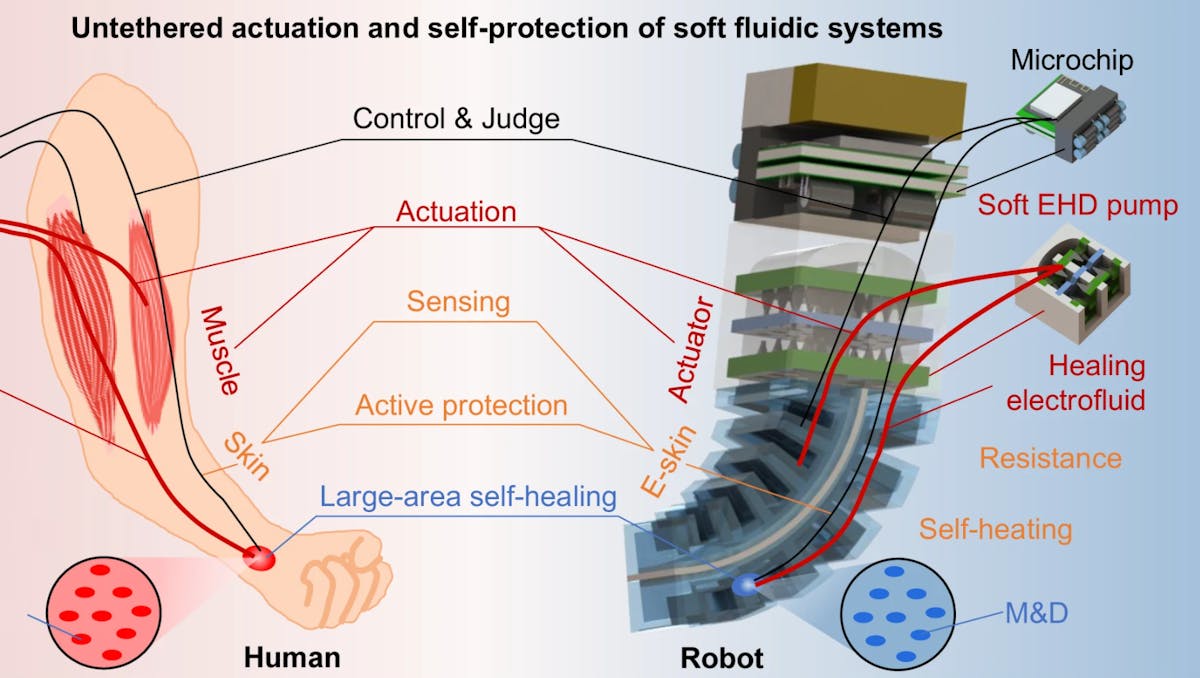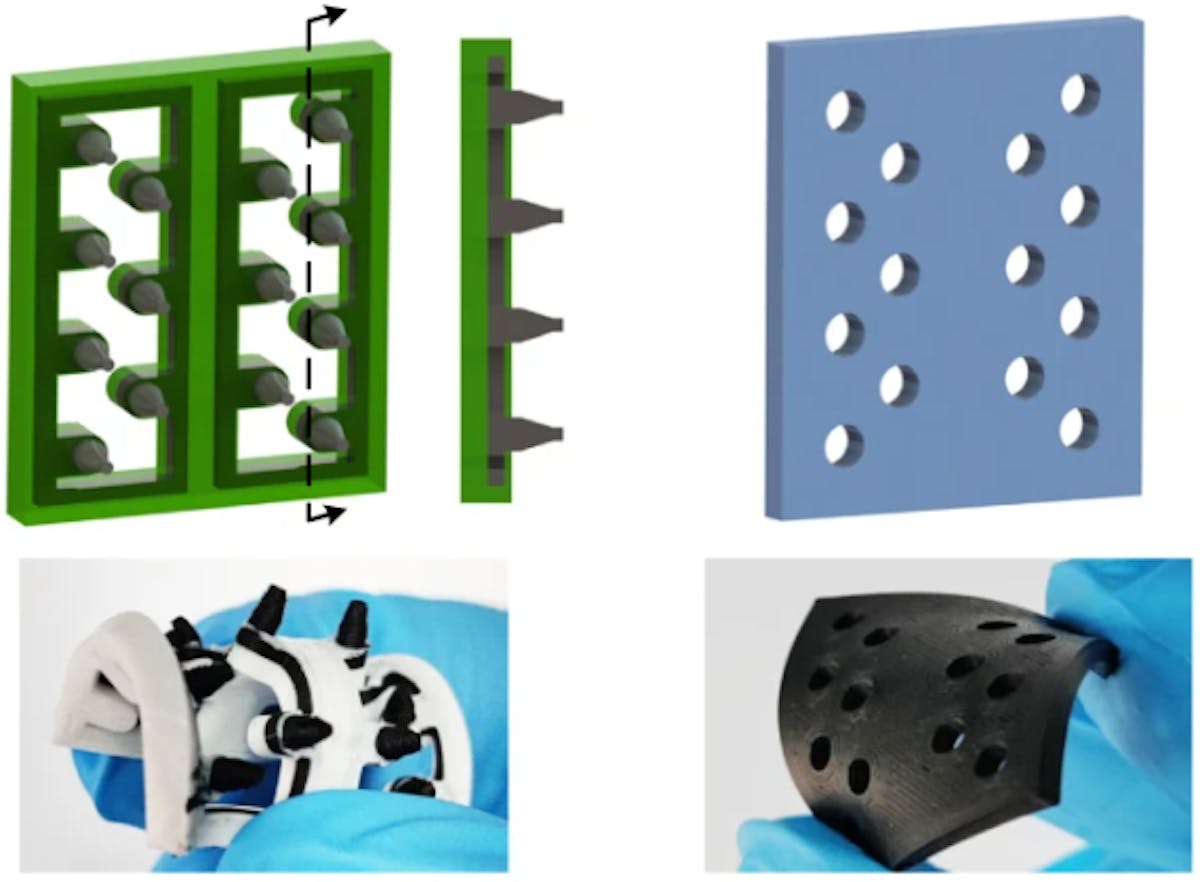Breaking the Mold (Then Promptly Repairing It)
Researchers have solved a number of nagging issues with soft fluidic robots by giving them self-healing capabilities and powerful actuators.

Soft fluidic robots are an important innovation in the field of robotics, characterized by their pliable, deformable structures that mimic the flexibility and adaptability of living organisms. Unlike their rigid counterparts, soft fluidic robots are capable of navigating complex environments with greater ease and precision, owing to their inherent ability to morph and squeeze through tight spaces. This unique attribute grants them a significant advantage over traditional robots in tasks that require delicate interactions or exploration in confined or hazardous areas, such as search and rescue operations in disaster-stricken zones, medical procedures within the human body, or inspections in cramped industrial settings.
Despite their unique advantages, the widespread adoption of soft fluidic robots has been impeded by several challenges. One of the primary obstacles is their reliance on external fluidic pumps, which limits their mobility and operational range, thereby constraining their potential applications. Alternatively, onboard rigid pumps, while offering increased mobility, tend to compromise the robot's overall performance. Furthermore, the soft design that endows them with their unique capabilities also renders them susceptible to damage, hindering their durability and resilience in demanding environments. This vulnerability has raised concerns regarding their long-term viability and cost-effectiveness, particularly in industries that require robust and enduring robotic systems.

The task of addressing these present shortcomings of soft fluidic robots was taken on by a team of researchers at Zhejiang University that would like to make such robots suitable for more real-world use cases. By incorporating advancements on a number of fronts they were able to build an agile soft robotics platform with onboard actuators and a self-healing capability. These techniques were leveraged to build a soft robotic gripper in this work, but the team believes that ultimately all manner of robots with physical intelligence will be created in a similar way.
The use of an external pump tethers a robot to a particular location, but onboard pumps are plagued with issues ranging from slow actuation speed and low power output to poor controllability. Soft electrohydrodynamic pumps, which control the flow of a liquid by generating an electric field through electrode pairs, offer a lot of promise, but do not produce sufficient pumping power. But by arranging the electrodes in what they call a conical-array-porous-plate pair, the researchers were able to achieve high levels of performance from the pumps. These pumps were used to trigger a pair of bidirectional actuators that were made from rubber using a mold-casting method.
In order to tackle the problem of healing damage, the team drew inspiration from the human blood clotting process that initiates wound healing. The outer surface of the robot is covered in an e-skin that can monitor itself for changes in electrical resistance. Such changes are indicative of damage, and this data can be leveraged by an onboard microcontroller to initiate a healing process. Healing is achieved by pumping an electrofluid (linalyl acetate, which fills the core of the robot) into the area of the wound, then releasing some chemical self-healing factors (methyltracetoxysilane and dibutyltindilaurate) that will cause the electrofluid to rapidly cure and restore the robot’s structural integrity. The healing only takes about ten seconds to complete, and the repaired material can be stretched over 1,200 percent its original size.
The advancements presented by the researchers represent a meaningful step forward for soft fluidic robotic systems. Should these techniques be adopted more widely, robots with physical intelligence may become a much more common sight. And if that newfound physical intelligence were to be combined with artificial intelligence, we might expect some very interesting applications to emerge.
R&D, creativity, and building the next big thing you never knew you wanted are my specialties.

